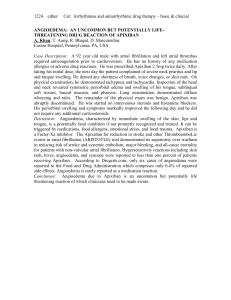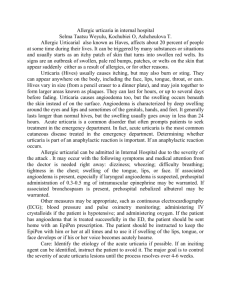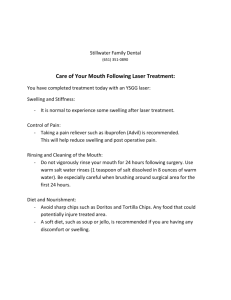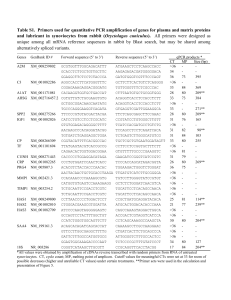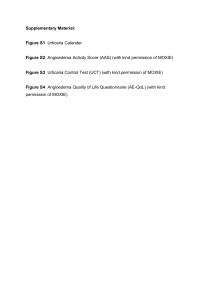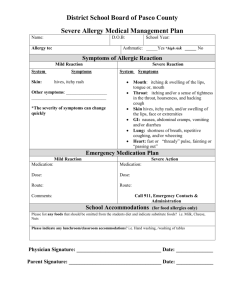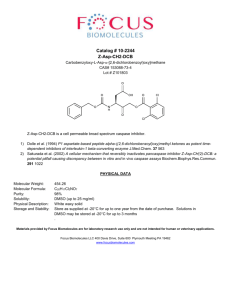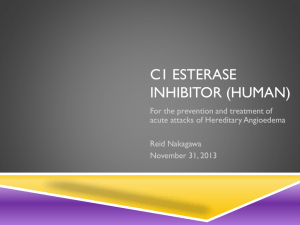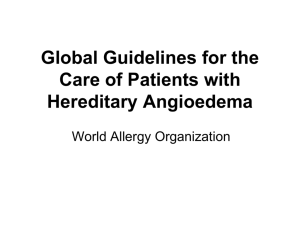TYPE - CIPO
advertisement
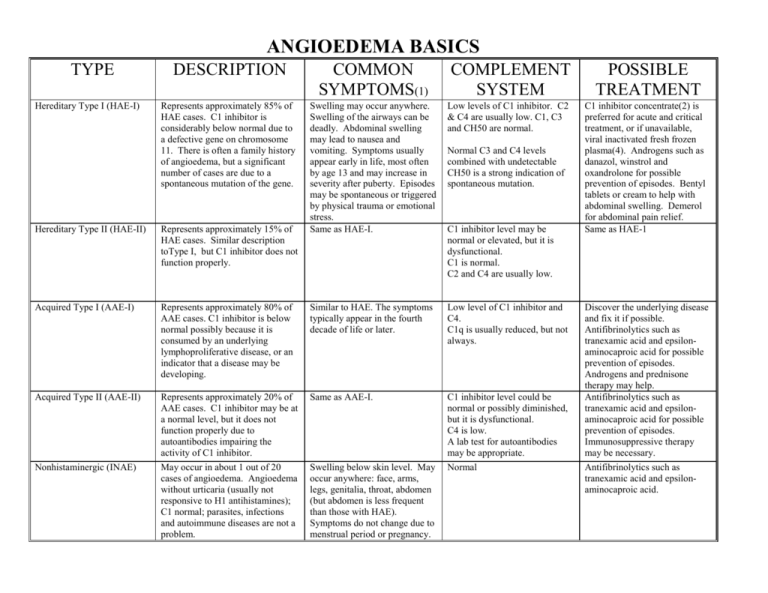
ANGIOEDEMA BASICS TYPE Hereditary Type I (HAE-I) DESCRIPTION COMMON SYMPTOMS(1) COMPLEMENT SYSTEM Represents approximately 85% of HAE cases. C1 inhibitor is considerably below normal due to a defective gene on chromosome 11. There is often a family history of angioedema, but a significant number of cases are due to a spontaneous mutation of the gene. Swelling may occur anywhere. Swelling of the airways can be deadly. Abdominal swelling may lead to nausea and vomiting. Symptoms usually appear early in life, most often by age 13 and may increase in severity after puberty. Episodes may be spontaneous or triggered by physical trauma or emotional stress. Same as HAE-I. Low levels of C1 inhibitor. C2 & C4 are usually low. C1, C3 and CH50 are normal. Normal C3 and C4 levels combined with undetectable CH50 is a strong indication of spontaneous mutation. Hereditary Type II (HAE-II) Represents approximately 15% of HAE cases. Similar description toType I, but C1 inhibitor does not function properly. Acquired Type I (AAE-I) Represents approximately 80% of AAE cases. C1 inhibitor is below normal possibly because it is consumed by an underlying lymphoproliferative disease, or an indicator that a disease may be developing. Similar to HAE. The symptoms typically appear in the fourth decade of life or later. Low level of C1 inhibitor and C4. C1q is usually reduced, but not always. Acquired Type II (AAE-II) Represents approximately 20% of AAE cases. C1 inhibitor may be at a normal level, but it does not function properly due to autoantibodies impairing the activity of C1 inhibitor. May occur in about 1 out of 20 cases of angioedema. Angioedema without urticaria (usually not responsive to H1 antihistamines); C1 normal; parasites, infections and autoimmune diseases are not a problem. Same as AAE-I. C1 inhibitor level could be normal or possibly diminished, but it is dysfunctional. C4 is low. A lab test for autoantibodies may be appropriate. Normal Nonhistaminergic (INAE) Swelling below skin level. May occur anywhere: face, arms, legs, genitalia, throat, abdomen (but abdomen is less frequent than those with HAE). Symptoms do not change due to menstrual period or pregnancy. C1 inhibitor level may be normal or elevated, but it is dysfunctional. C1 is normal. C2 and C4 are usually low. POSSIBLE TREATMENT C1 inhibitor concentrate(2) is preferred for acute and critical treatment, or if unavailable, viral inactivated fresh frozen plasma(4). Androgens such as danazol, winstrol and oxandrolone for possible prevention of episodes. Bentyl tablets or cream to help with abdominal swelling. Demerol for abdominal pain relief. Same as HAE-1 Discover the underlying disease and fix it if possible. Antifibrinolytics such as tranexamic acid and epsilonaminocaproic acid for possible prevention of episodes. Androgens and prednisone therapy may help. Antifibrinolytics such as tranexamic acid and epsilonaminocaproic acid for possible prevention of episodes. Immunosuppressive therapy may be necessary. Antifibrinolytics such as tranexamic acid and epsilonaminocaproic acid. ANGIOEDEMA BASICS Allergic Idiopathic Swelling and/or hives are a reaction to an outside influence such as food, bee sting, cold, heat, latex or drug. The outside influence provokes a histamine reaction, which leads to swelling and/or the hives. Swelling and/or hives persist. Thyroid dysfunction should be considered. Swelling occurs most often in the face and throat area. Urticaria (hives) may be present. If condition persists beyond 6 weeks it is considered chronic idiopathic and not an allergic reaction. Swelling may occur just about anywhere and may be accompanied by urticaria (hives). Normal Avoid the substance/item that causes the allergic reaction. Antihistamines. Adrenaline (epinephrine) possibly as selfinjecting Epi pens for emergencies. Normal Primarily antihistamines. DHEA. 1-thyroxine for thyroid dysfunction. Prednisone therapy. (3) Originally presented November 17, 1999 1. The presence of urticaria associated with angioedema usually suggests a diagnosis other than HAE or AAE. 2. As of late 1999, C1 inhibitor concentrate is undergoing a clinical trial in the United States that may lead to FDA approval. It is currently available in other countries. 3. Although antifibrinolytics such as tranexamic acid and epsilon-aminocaproic acid are not typically effective for Idiopathic Angioedema they might be used as a means to help with a proper diagnosis. If they are an effective treatment it is an indication of possible AAE or INAE. 4. Medical opinion exists that a swelling episode may get worse when FFP is administered, but documentation does not appear to be available to support this opinion. A Brief Description of the Complement System: The Complement is part of our immune system. It involves a series of complex proteins (C1 thru C9 in addition to C1 inhibitor) that act in "concert" to clear foreign organisms from our bodies. C1 inhibitor essentially monitors the complement system and prevents it from having a "runaway" reaction. When C1 inhibitor is not present at an adequate level, or is dysfunctional, the system "overreacts" resulting in abnormal swelling. Angioedema Basics was compiled based upon current research and medical knowledge. The emphasis has been on presenting the information in language that is not technical. Hopefully this information will help those that are just starting to try to understand the different types of angioedema. Your comments to improve upon the correctness and readability should be directed to Roy Montague, roy@velocitus.net or phone/fax 208 286-0637. Your input is much appreciated. DISCLAIMER: YOU MUST SEEK COMPETENT MEDICAL ADVICE, DO NOT RELY UPON THIS INFORMATION FOR TREATMENT

